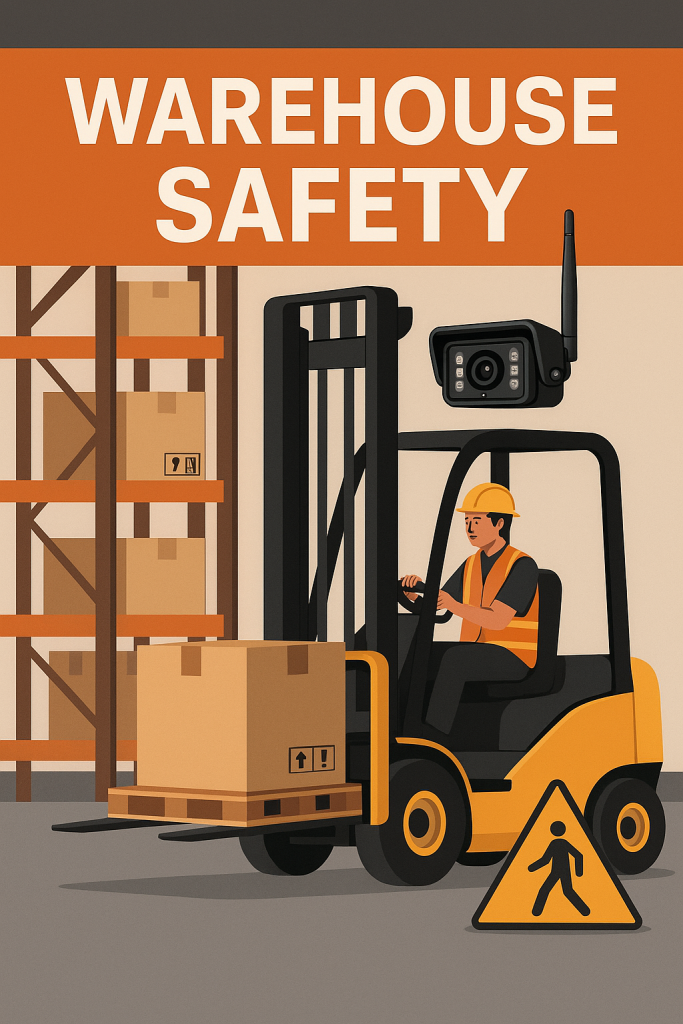1. Why Forklift Safety Matters More Than Ever
Forklifts are the “muscles” of a warehouse, but they are also one of the biggest safety risks.
Narrow aisles, mixed traffic (people + pallets + machines) and long working hours mean that small mistakes can turn into serious accidents.
Instead of treating safety as just a rule on the wall, leading warehouses now see it as a daily system: layout, people, machines and technology all working together.
2. Start With a Clear Traffic Plan
Before buying equipment, look at your warehouse like a city planner.
-
Mark one-way routes for forklifts where possible
-
Separate pedestrian walkways from forklift lanes using paint, guardrails or barriers
-
Plan turning zones and waiting areas at busy intersections
-
Keep entry/exit areas clear so drivers always have room to maneuver
A simple floor plan printed and discussed with the team already reduces confusion and near-misses.
3. Train Drivers and Pedestrians Together
Many companies train forklift drivers, but forget about everyone else working around them.
-
Run short toolbox meetings where you explain who has priority, where to walk and where not to walk
-
Teach pedestrians to make eye contact with drivers before crossing a lane
-
Encourage hand signals and clear communication when loading trucks or racks
-
Refresh training regularly, not just once a year
When drivers and walkers share the same rules, the whole warehouse becomes calmer and safer.
4. Use Simple Visual Aids Before High Tech
Technology is important, but basic visual tools are often the fastest win:
-
Large warning signs at blind corners and loading bays
-
Convex mirrors at intersections
-
Floor markings showing buffer zones around racks and docks
-
Different colors for different zones: storage, travel lanes, pedestrian paths
These low-cost changes make it easier for a new worker or visitor to “read” your warehouse the first time they walk in.
5. Where Cameras Fit Into the Safety Picture
Once the layout and basic rules are in place, cameras become much more effective.
For forklifts
-
A rear-view or mast camera helps when reversing or stacking high pallets
-
A side-view camera reduces blind spots near pedestrians and rack ends
-
A digital wireless system is often easier to install on moving masts
For trucks and yard vehicles
-
IP69K reversing cameras support safe docking in wet or dusty conditions
-
Side-view or BSD AI cameras warn drivers when people or vehicles enter the blind spot
Cameras should not replace training, but they give drivers a second pair of eyes and provide valuable video evidence when you review incidents.
6. Daily and Weekly Safety Checklist
Create a simple checklist that supervisors and drivers can actually use:
Daily (driver)
-
Check horn, lights and brakes
-
Inspect forks, chains and tires
-
Clean camera lenses and mirrors
-
Confirm that beepers and alarms work
Weekly (supervisor)
-
Walk the routes and look for new obstacles
-
Repaint floor markings where they are fading
-
Review any near-miss reports or camera footage
-
Check that cameras, monitors and cables are intact
A checklist keeps improvement continuous instead of “one big safety campaign and then forgotten”.
7. Build a Safety Culture, Not Just a Safety Policy
The best warehouses are not the ones with the thickest manuals, but those where:
-
Drivers feel comfortable reporting near-misses
-
Managers use camera footage to coach, not only to blame
-
Small improvements are made every month
-
Everyone believes “getting the job done safely is part of doing it well”
Technology, including advanced cameras and AI blind-spot systems, is powerful.
But the heart of a safe warehouse is still clear processes + trained people + the right tools working together.


